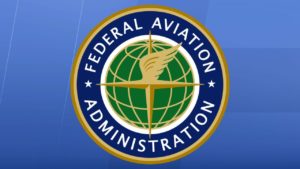 At last week’s UAS Symposium, FAA Administrator Steve Dickson delivered a keynote address outlining the progress that the FAA has made in delivering drone rules: Ops Over People, Ops Over Moving Vehicles, Remote ID. Dickson also had very good news about the next big step in drone regulation, announcing a new ARC for BVLOS flight.
At last week’s UAS Symposium, FAA Administrator Steve Dickson delivered a keynote address outlining the progress that the FAA has made in delivering drone rules: Ops Over People, Ops Over Moving Vehicles, Remote ID. Dickson also had very good news about the next big step in drone regulation, announcing a new ARC for BVLOS flight.
The Aviation Rulemaking Committee, or ARC, represents a collaboration between industry and regulators. It’s a model that may not be perfect, but has proven effective at getting new regulations defined: and it gives the drone industry a voice in forming critical regulations that will effect commercial operations moving forward. “….I’m pleased to announce that the FAA is forming a new Aviation Rulemaking Committee, or ARC, to help the agency develop a regulatory path for routine Beyond Visual Line of Sight operations. This committee will consider the safety, security and environmental needs, as well as societal benefits, of these operations. Within six months, the committee will submit a recommendations report to the FAA,” said Dickson.
“I think we can all agree this is a big step forward, and it will help pave the way for routine package delivery, infrastructure inspection, and other more complex drone operations beyond the visual line-of-sight of the remote pilot.”
Iris Automation, creators of the Casia system of onboard detect and avoid technology, has announced that they will be members of the ARC for BVLOS flight.
More than the ARC for BVLOS Flight
The announcement was the latest indication that flight beyond visual line of sight is high on the agency’s list of priorities. The FAA is also continuing the FAA UAS IPP, or Integration Pilot Program, with the new BEYOND program, designed to help inform performance-based BVLOS flight rules.
Dickson said that the BEYOND program would “advance and expand the scope of repeatable and scalable Beyond Visual Line of Sight operations under today’s rules.”
“….My role as FAA Administrator is to figure out how to introduce these emerging technologies while maintaining the unwavering safety commitment that the public has come to expect from the FAA.”
“I like to say that Safety is a journey, not a destination, and that journey requires all of us to continually learn and grow as aviators. That’s how we—all of us here—keep it safe…,” said Dickson.
“….The FAA is here to help, and we’ll continue to work together as a community to go above and beyond and see to it that drones remain here for good.”

Miriam McNabb is the Editor-in-Chief of DRONELIFE and CEO of JobForDrones, a professional drone services marketplace, and a fascinated observer of the emerging drone industry and the regulatory environment for drones. Miriam has penned over 3,000 articles focused on the commercial drone space and is an international speaker and recognized figure in the industry. Miriam has a degree from the University of Chicago and over 20 years of experience in high tech sales and marketing for new technologies.
For drone industry consulting or writing, Email Miriam.
TWITTER:@spaldingbarker
Subscribe to DroneLife here.







[…] everyone were delighted that the Air Travel Rulemaking Committee produced a robust set of standards for Beyond Visual Line Of Vision (BVLOS) operations in […]